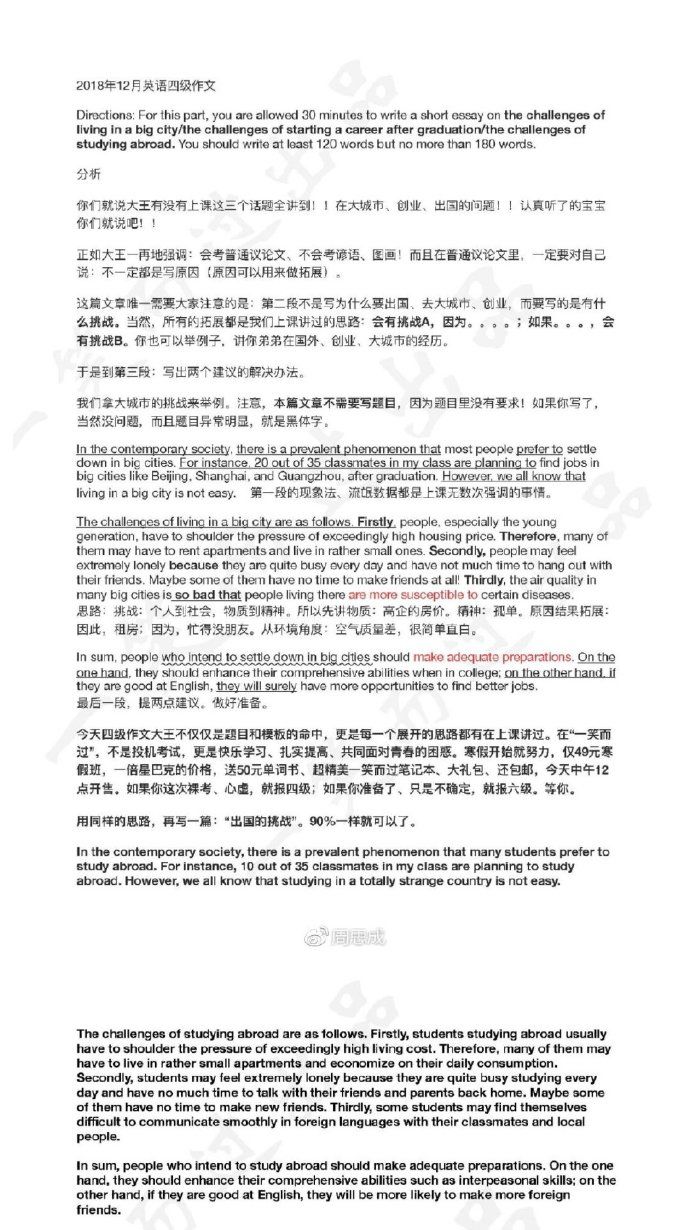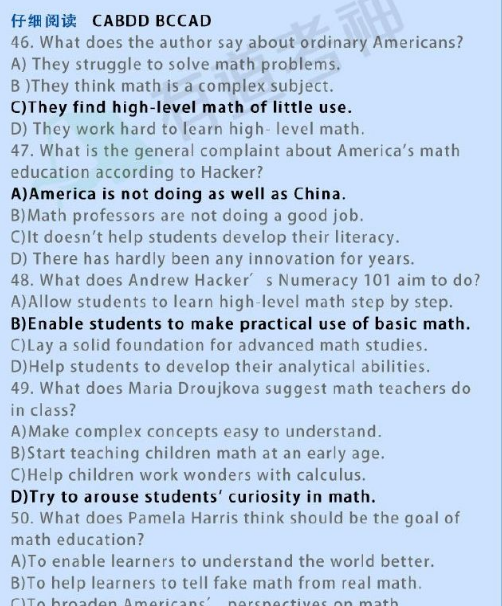仲裁裁决书中英文对照
|
AWARD 双方当事人: (1) 申诉方/反诉被诉方:卖方 (2) 被诉方/反诉申诉方:买方 Parties: (1) Claimant/counter-defendant: Seller (2) Defendant/Counter-claimant: Buyer 仲裁地: Place of arbitration: 事实 FACTS 1994年,双方当事人根据某种协议规格规定签署了3份买卖一种产品的合同。在收到货运单据后,买方即按合同规定,支付了全部合同价的90%. In 1994, the parties concluded three contracts for the sale of a product according to certain contract specifications. The buyer paid 90% of the price payable under each of the contracts upon presentation of the shipping documents, as contractually agreed. 按第一和第三份合同提供的产品符合协议规格,第二批货物的规格在装运前就有过争议。产品抵达目的地后重新检验,发现其不符合协议规格。为便于脱手,经过某种处理,最终买方将产品卖给了第三方,损失惨重。 The product delivered pursuant to the first and third contracts met the contract specifications. The conformity of the second consignment was dispute prior to its shipment. When the product was again inspected upon arrival, it was found that it did not meet the contract specifications. The product was eventually sold by the buyer to third parties at considerable loss, after having undergone a certain treatment to make it more saleable. 卖方提请仲裁,要求收回10%的合同余款。买方提起反诉,声称应从卖方所索费用中扣除买方估计应由卖方赔偿买方的一笔费用,即:直接损失费、财务成本费、所损失的利润及利息费。 The seller initiated arbitration proceedings to recover the 10% balance remaining due under the contracts. The buyer filed a counterclaim alleging that the seller's claim should be set off against the amounts which the buyer estimates to be payable to the buyer by the seller, i.e., the direct losses, financing costs, lost profits and interest. 一、适用的法律 I. APPLICABLE LAW (1) 鉴于合同未含有关实体法的任何条款,故法律问题应根据国际商会仲裁规则第13条第3款决定。根据该条规则,仲裁员们应适用它们认为适合的法律冲突规则所规定的准据法则。 (1) The contract contains no provisions regarding the substantive law. Accordingly that law has to be determined by the Arbitrators in accordance with Art. 13(3) of the ICC rules. Under that article, the Arbitrators will apply the law designated as the proper law by the rule of conflicts which they deem appropriate. (2) 这是一个由不同国际的卖方和买方签署的在第三国交货的合同。买卖规定为船上交货,故风险在卖方所在国便转给了卖方。由此,卖方所在国似乎就成为与买卖关系最近的管辖地。 (2) The contract is between a Seller and a Buyer (of different nationalities) for delivery (in a third country). The sale was f.o.b. so that the transfer of risks to the Buyer took place in (the country of Seller). (The country of Seller) accordingly appears as being the jurisdiction to which the sale is most closely related. (3) 有关国际货物买卖适用法律的1995年6月15日《海牙公约》在涉及销售合同时,将卖方现行居住地法律视为占支配地位的法律。买方所在国加入了《海牙公约》,卖方所在国则没有。尽管如此,法律冲突法的总趋势却是适用合同主要业务的债务人现行所在地的国内法。在销售合同中,此债务人为卖方。基于这些因素,卖方所在国的法律似乎便成了规定买卖双方之间合同的准据法。 (3) The Hague Convention on the law applicable to international sales of goods dated 15 June 1995 (Art. 3) regarding sales contracts, refers as governing law to the law of the Seller's current residence. (The country of the Buyer) has adhered to the Hague convention, not (the country of the Seller). However, the general trend in conflicts of law is to apply the domestic law of the current residence of the debtor of the essential undertaking arising under the contract. That debtor in a sales contract is the Seller. Based on those combined findings, (the law of the country of the Seller) appears to be the proper law governing the Contract between the Seller and the Buyer. (4) 至于卖方所在国法律的适用规则,仲裁员们依据的是双方当事人各自陈述的理由,以及仲裁员们从一位独立咨询人处所得的信息。根据国际商会仲裁规则第13条最后一段之规定,仲裁员们也将考虑相关的贸易惯例。 As regards the applicable rules of (the law of the country of the Seller), the Arbitrators have relied on the Parties' respective statements on the subject and on the information obtained by the Arbitration from an independent consultant. The Arbitrators, in accordance with the last paragraph of Art. 13 of the ICC rules, will also take into account the relevant trade usage. 二、反诉的可受理性 II. ADMISSIBILITY OF THE COUNTERCLAIM (5) 仲裁庭认为,1980年4月11日的《关于国际货物销售的联合国公约》(通称《维也纳公约》)是现行贸易惯例的最好渊源,即使买卖双方所在国均不是公约的成员国,倘若买卖双方所在国均为公约成员国,在本案中,该公约不仅可考虑作为贸易惯例适用,而且还可作为法律适用 (5) The Tribunal finds that there is no better source to determine the prevailing trade usage than terms of the United Convention on the International Sale of Goods of 11 April 1980, usually called the Vienna Convention. This is also even though neither (the country of the Buyer) nor (the country of the Seller) are parties to that Convention. If they were, the Convention might be applicable to this case as a matter of law and not only as reflecting the trade usage. (6) 《维也纳公约》已在17个国家生效,考虑用它适用于国际货物销售中的不符规格事项有通用惯例,应属合情合理。《维也纳公约》第38条第1款规定买方负有“当场检查或叫人检查货物”的责任。买方应在注意或应当注意到瑕疵后的合理期限内通知卖方货物不符合合同的规格;否则,他将丧失就上述不符规格而提起索赔的权利。第39条第1款具体规定道: “如买方在交货后两年之内没有通知卖方,无论如何,买方都将丧失在货物不符规格问题上的申诉权利,除非此种不符规格构成了对长期担保的违背”。 (6) The Vienna Convention, which has been given effect to in 17 countries, may be fairly taken to reflect the generally recognized usage regarding the matter of the non-conformity of goods on international sales. Art. 38(1)of the Convention puts the onus on the Buyer to “examine the goods or cause them to be examined promptly”. The buyer should then notify the Seller of the nonconformity of the goods within a reasonable period as of the moment he noticed or should have noticed the defect; otherwise he forfeits his right to raise a claim based on the said non-conformity. Art. 39(1) specifies in the respect that: “In any event the buyer shall lose the right to rely on a lack of conformity of the goods if he has not given notice thereof to the seller within a period of two years from the date on which the goods were handed over, unless the lack of conformity constituted a breach of guarantee covering a longer period.” (7) 本案中,买方在合理的期限内已对货运作过检查,因为在货物抵达之前,一位专家曾被请去检查过装船。买方也应被认定在合理的期限内,即在专家报告公布后的8天内,就产品瑕疵作过通报。 (7) In the circumstances, the Buyer had the shipment examined within a reasonable time-span since (an expert) was requested to inspect the shipment even before the goods had arrived. The Buyer should also be deemed to have given notice of the defects within a reasonable period, that is eight days after the expert's report had been published. (8) 仲裁庭认为,就本案情况而言,买方遵守了上述《维也纳公约》的要件规定。这些要件要比卖方所在国的法律的规定灵活许多。卖方所在国法律所规定的买方通知卖方的时限特别短,特别具体,在这点上,似乎是通用的贸易惯例的一种例外。 (8) The Tribunal finds that, in the circumstances of the case, the Buyer has complied with the above-mentioned requirements of the Vienna Convention. These requirements are considerably more flexible than those provided under (the law of the country of the Seller). This law, by imposing extremely short and specific time requirements in respect of the giving of the notice of defects by the Buyer to the Seller appears to be an exception on this point to the generally accepted trade usage. (9) 无论如何,也应当认定卖方已经丧失了援引《维也纳》第38和第39条有关产品不符规格的任何规定的权利,因为第40条规定:“只有卖方知道,或他不可能不知道,或他没有透露有关的不符规格的事实,他便不能适用第38和第39条规定”。实际看来这也是事实,因为书证和口证都清楚表明卖方知道且不可能不知道提交的货物不符合同规格规定。 (9) In any case, the Seller should be regarded as having forfeited its right to invoke any non-compliance with the requirements of Art. 38 and 39 of the Vienna Convention since Art. 40 states that the Seller cannot rely on Arts. 38 and 39, if the lack of conformity relates to facts of which he knew, or of which he could not have been unware, and which he did not disclose. Indeed, this appears to be the case, since it clearly transpires from the file and evidence that the Seller knew and could not be unaware (of the non-conformity of the consignment to ) contract specification. (10) 就是假定该条款可适用于本案,它无论如何也没有规定本仲裁庭应驳回反诉,即使对反诉的审理会耽误对主诉的审查。按其规定,要求抵消的反诉一般都应接受,除非仲裁庭认为同时审理反诉会过分耽误对事实的判决,因而认为把反诉同主诉分开比较恰当。在本案中,按规定说明,主诉和反诉已经进行共同审理,成为一次性裁决事项,故没有理由在将它们分割开。 (10) This provision, even assuming that it may apply in the circumstances, does not in any way require the tribunal to reject the counterclaim if its examination might delay that of the main claim. It simply states that the counterclaim for setting off is always admissible except only that the tribunal may find it appropriate to serve the counterclaim from the main claim lest a concurrent examination of counterclaim should excessively delay the judgment on the merits. In the present case, the main Claim and the counterclaim, in accordance with the Terms of Reference, have been examined together so as to be the subject of a single award, and there is no reason to separate them. (11) 仲裁庭裁决如下:卖方应获得其全部所主张的金额,扣除买方在反诉中提出的抵消部分数额。 (11) The Tribunal awarded the Seller the full amount of its claim and set it off against part of the counterclaim filed by the Buyer. |








